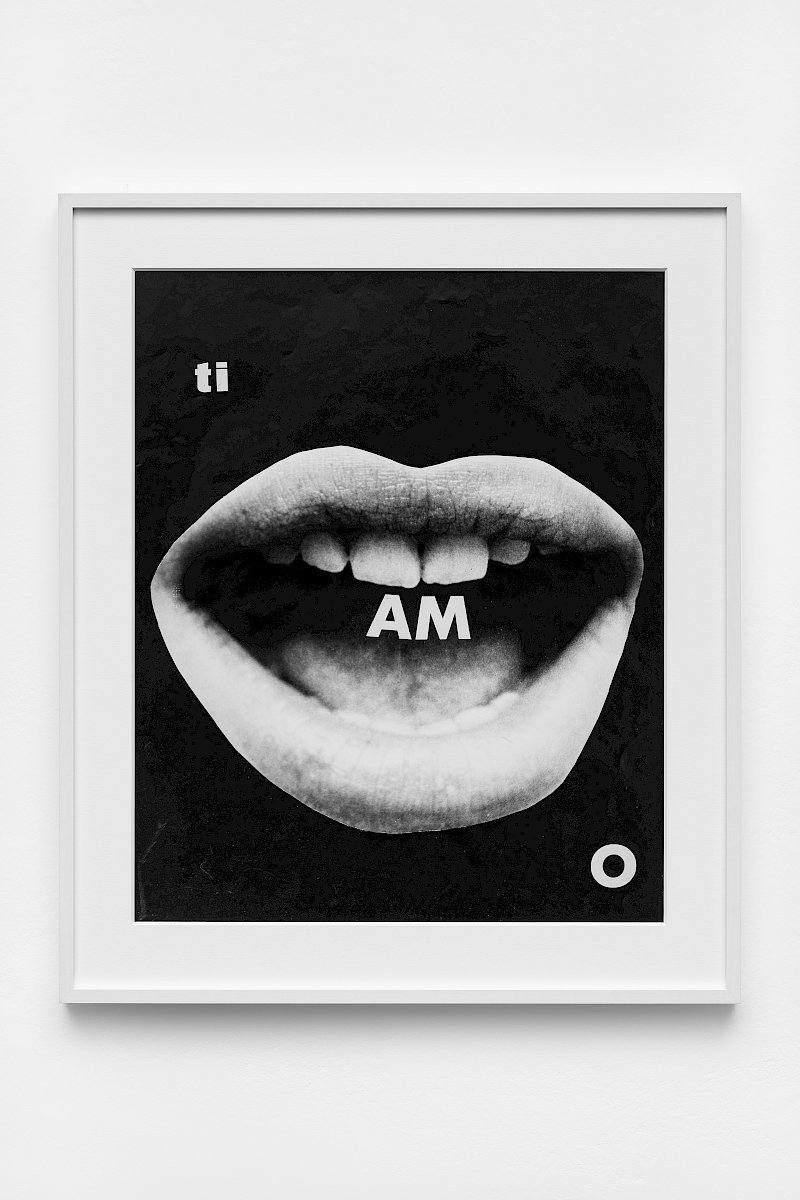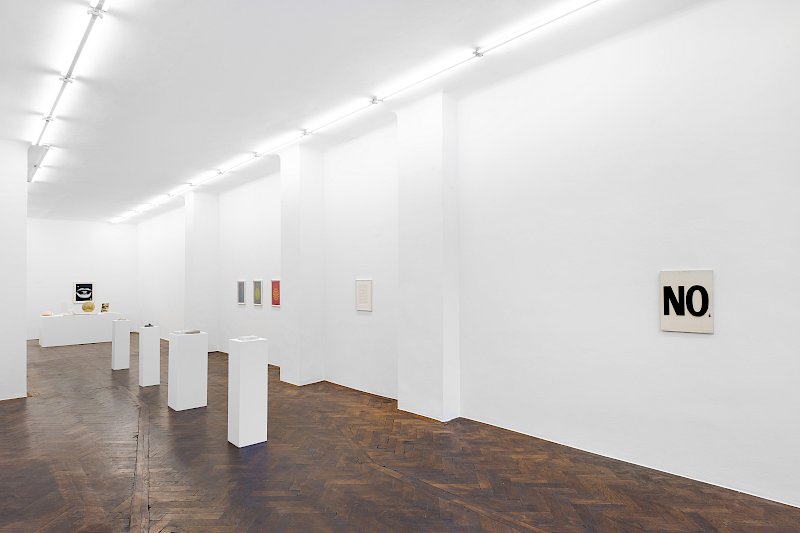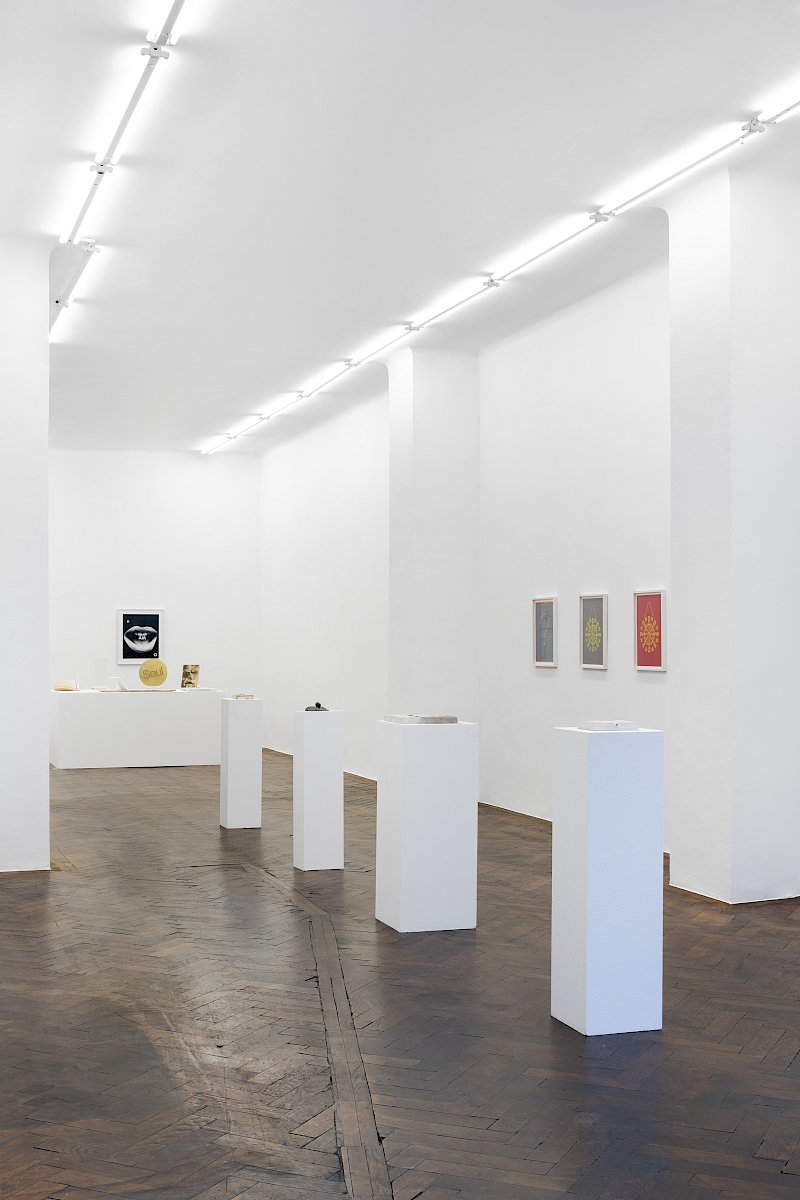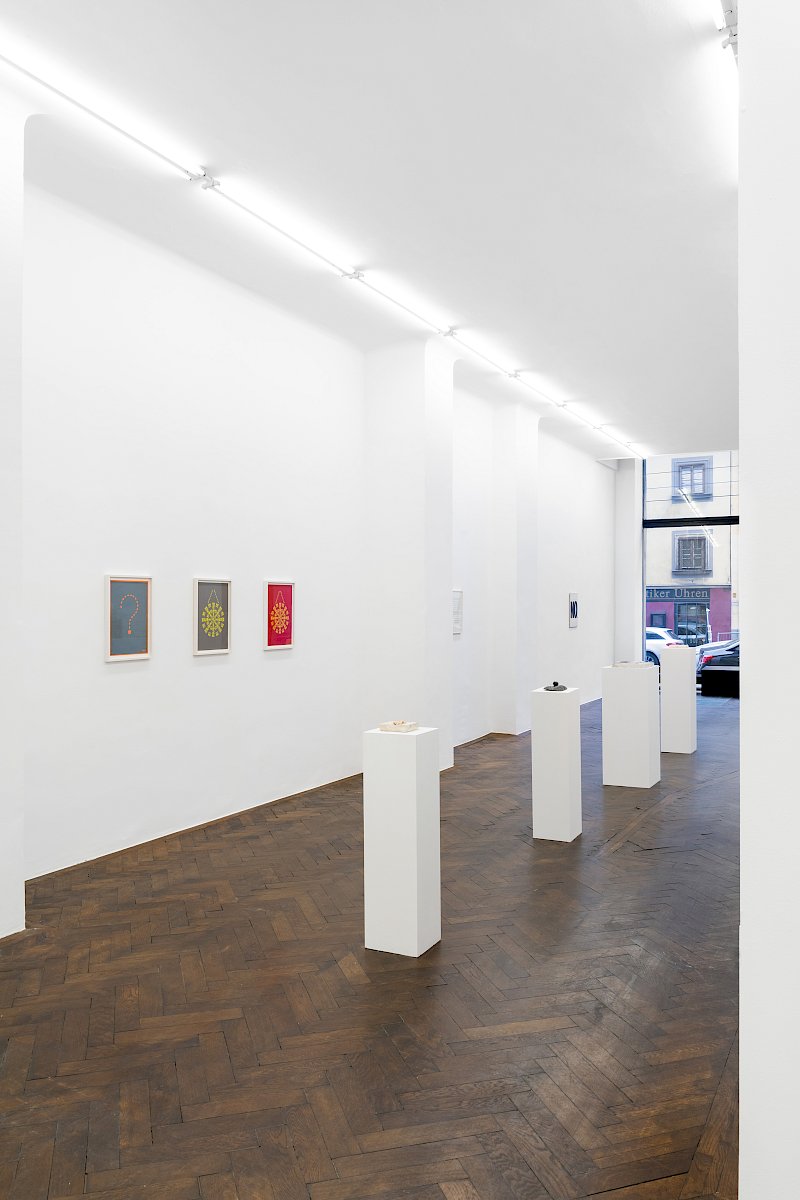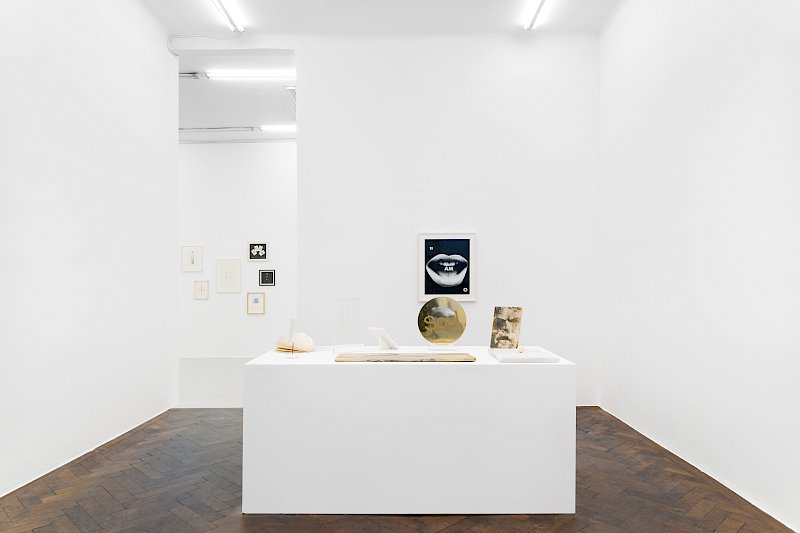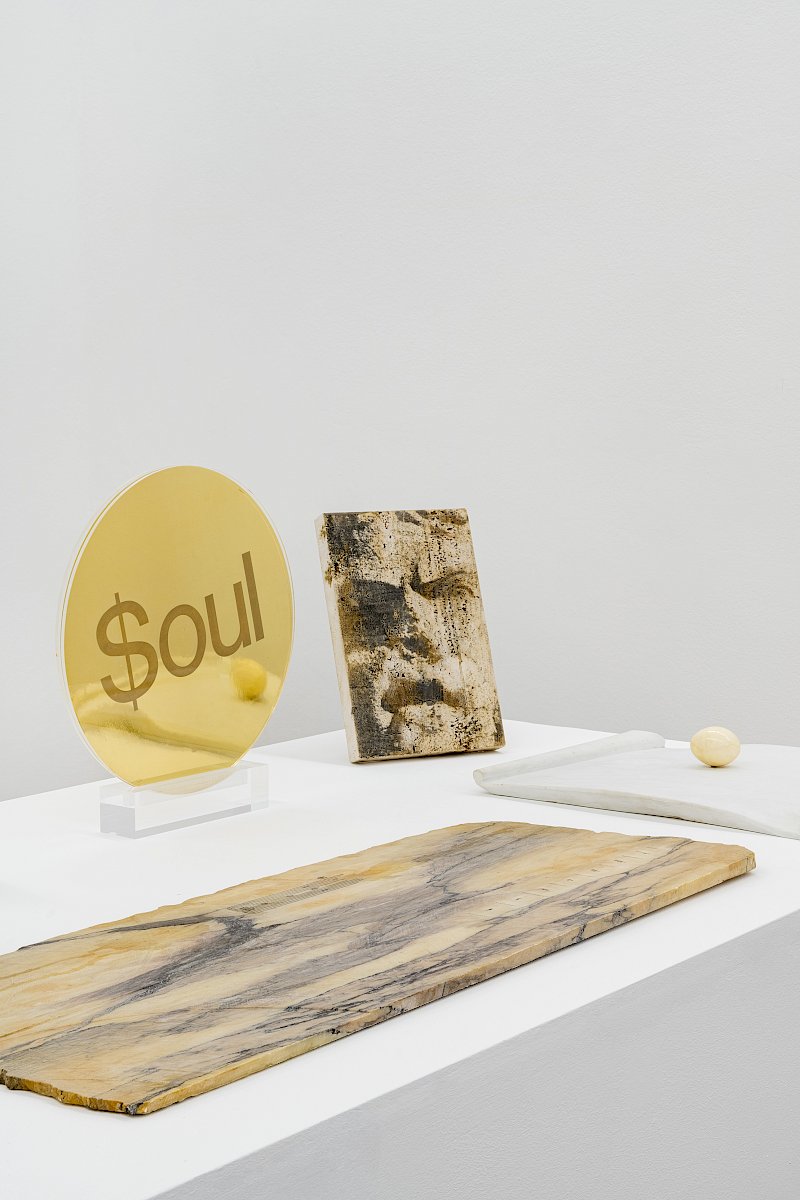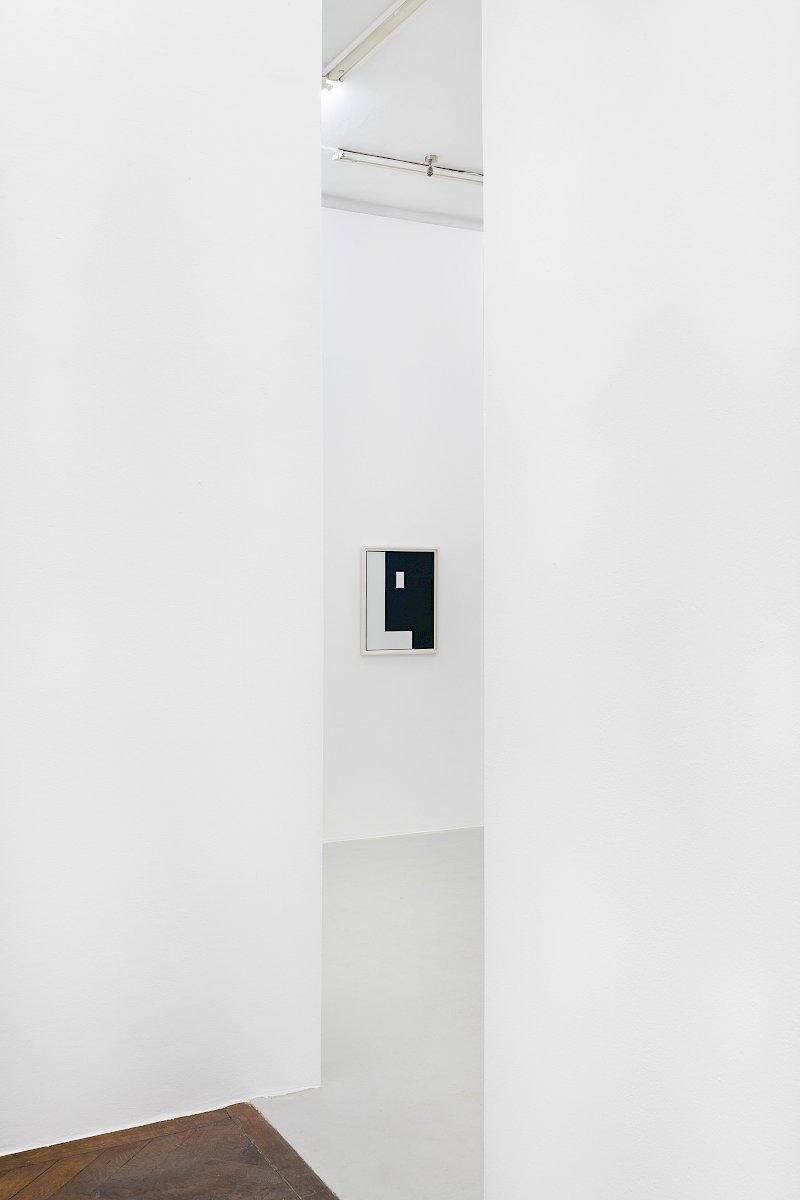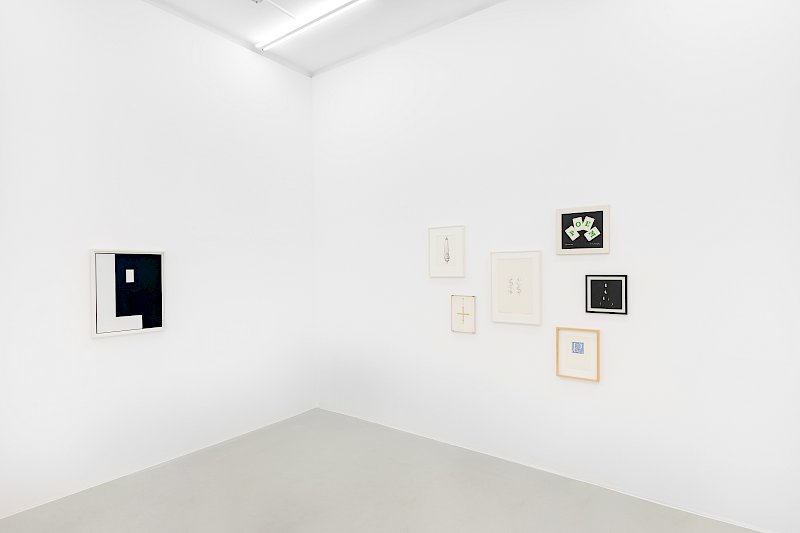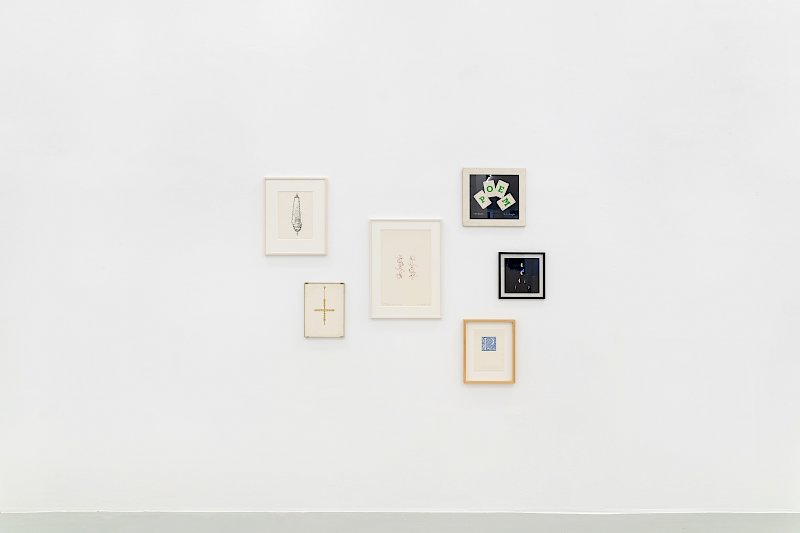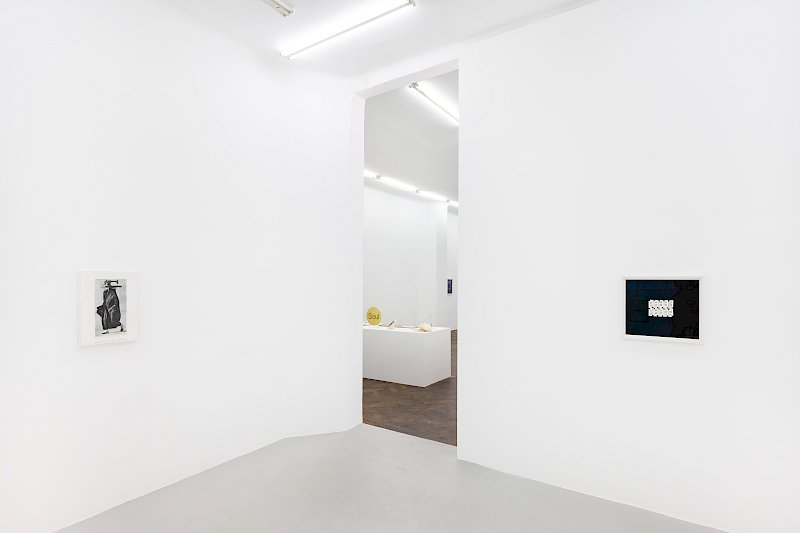Galerie Hubert Winter is pleased to present an exhibition dedicated to the work of Mirella Bentivoglio, created in collaboration with the Archivio Mirella Bentivoglio, directed by her daughters Ilaria and Leonetta Bentivoglio. This is Bentivoglio's first solo exhibition at the gallery and, in general, the first in Austria after her passing in Rome in 2017. The exhibition is thus in the context of a recent, lively reception of the artist's work, as can be seen, among other things, in exhibitions at the Venice Biennale 2022, at the Fondazione Antonio dalle Nogare (2022/23), and following her major solo presentation at the Galleria Nazionale in Rome (2022/23). Her work is represented in numerous collections including MACRO Rome, Galleria Nazionale di Roma, Uffizi Gallery, Getty Institute, MAC Sāo Paolo, MoMA New York.
MIRELLA BENTIVOGLIO...
... contro l'alfabeto – a disordered ABC of the artist.
… tra le lingue / between languages. Mirella Bentivoglio was born on March 28, 1922 in Klagenfurt, Austria. She received a multilingual education at an early age, growing up surrounded by her parents' library during World War II and studying in German-speaking Switzerland and England. She received fellowships from the Salzburg Seminar for America Studies and the Getty Institute in Los Angeles. In 1968, she was awarded a teaching license in aesthetics and art history at Italian academies.
… e l'alchimia delle lettere / and the alchemy of letters. Painter and author of poetry in Italian and English until the mid-1960s, she later expressed her interest in combining words and images. The encounter with the movement of concrete poetry around the Brazilian group Noigandres, other currents of verbal-visual art, such as poesia visiva in the 1970s in Italy, and its origins in the avant-gardes of the 20th century, influenced Bentivoglio's work. The liberation of words from meaning and grammatical syntax, initiated by Futurism and Dadaism, opened a field of experimentation for Bentivoglio. What I am always looking for is 'coincidence'.
… e la creatività della natura / and the creativity of nature. From the practice of concrete and visual poetry, which marked her entry into a sphere of experimentation, she expanded her expression to include a distinctive form of object poetry. Works in stone or marble repeatedly take up symbols such as the book, the egg, and the symbolic dichotomy of the letters E and O, the Italian connector and disjunctor (e can be translated as "and" and o as "or"), additionally, the O also functions as an icon for the egg in her work, that is, as a symbol of origin. I have found a particular medium that I consider very suitable to my poetic world. It is stone, the crust of our planet. The veins of the stone are the writing of the earth. From the late 1970s and beyond, she gradually explored the performative potential of language and its interaction with the environment, erecting large symbolic structures of linguistic matrix in public space, which also testifies to her engagement with the phenomena of monument and memory.
… come curatrice e critica / as curator and critic. For Mirella Bentivoglio, curation and criticism were part of her comprehensive practice: I do not distinguish between my so-called creative work and my critical thought. Her importance as a curator should not be underestimated. This can be exemplified by the exhibition Materializzazione del linguaggio, which she curated as part of the 38th Venice Biennale in 1978. The show presented the stories and works of exclusively female protagonists who interrupted the monolog of patriarchal culture and finally managed to establish themselves. In this key period for Italian society and art in the 20th century, retrospectively culminating in 1978—Carla Lonzi's Taci, anzi parla (The Diary of a Feminist) was published, the Rivolta femminile formed as a group, publishing house and published a manifesto—Bentivoglio took an important role in the dissemination of feminist thought and the manifestation of a new critical consciousness that encouraged many women artists, curators and art historians to rethink their role in society, art and life. Nevertheless, she always remained an individualist who was not satisfied with a domain or categorization of female art: [...] my deep need to escape categories and always give myself the autonomy of ambiguity. To find my dynamic identity in constant instability.
… poetessa della forma / poet of form. The work of Mirella Bentivoglio is characterized by a plurality of expressive forms. According to the artist herself, these do not arise from contradictions—the transitions from painting to poetry and the play with words to sculpture run along a continuum. There has only been a kind of enlargenment, not of the work itself but of the source of inspiration, and elsewhere she says: In my work there is a continous back and forth between meaning and form. [...] If I have to sum up my various bodies of work in one word, I would choose the word ‘poetry’.*
* All italicized passages are quotes from Mirella Bentivoglio, taken from an interview between her and Benjamin Kersten, published in: Frances K. Pohl (ed.), Pages: Mirella Bentivoglio, Selected Works 1966-2012, Pomona College Museum of Art, 2015.
